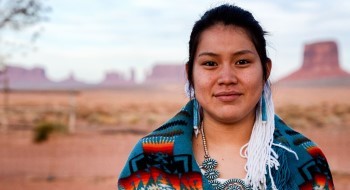
"There can never be peace between nations until there is first known that true peace which is within the souls of men." - Black Elk
Common Misconceptions about Indigenous Culture
- Indigenous people are not a monolith: American television and media often does a poor job at showing the rich diversity not only among indigenous tribes, but of indigenous people living everyday life. There are over 500 federally recognized tribes in the United States, each with their own rich customs, languages, and traditional outfits.
- There's no such thing as 18% Cherokee: Tribes are classified as domestic dependent nations operating within the United States each with their own requirements for citizenship or enrollment. Laws related blood relation and/or lineage are required for some, but not all tribes for citizenship. Once you become a member, you are 100% accepted.
- The Native American vs. Indigenous people debate: Just as groups within the black community interchangeably use "Black" or "African American", so do native people with the terms "Indigenous", "First Nation", "Native American", or the name of their tribe. If you are unsure of an individual's tribal affiliation, "Indigenous" can serve as a universal descriptor for people native to a particular location.
- Indigenous people are everywhere: From the world of wrestling to the engineering teams at NASA, indigenous people reach every corner of the American experience. Indigenous people have roughly the same population as Jewish-Americans or Chinese-Americans at around 6 million.
- Indigenous people do not get a "free ride": Government aid given to reservations or indigenous people is often the result of the disproportionate economic hardship experienced by those people or as assistance for military veterans and the disabled. Money is not given to an indigenous person solely based on their tribal citizenship.